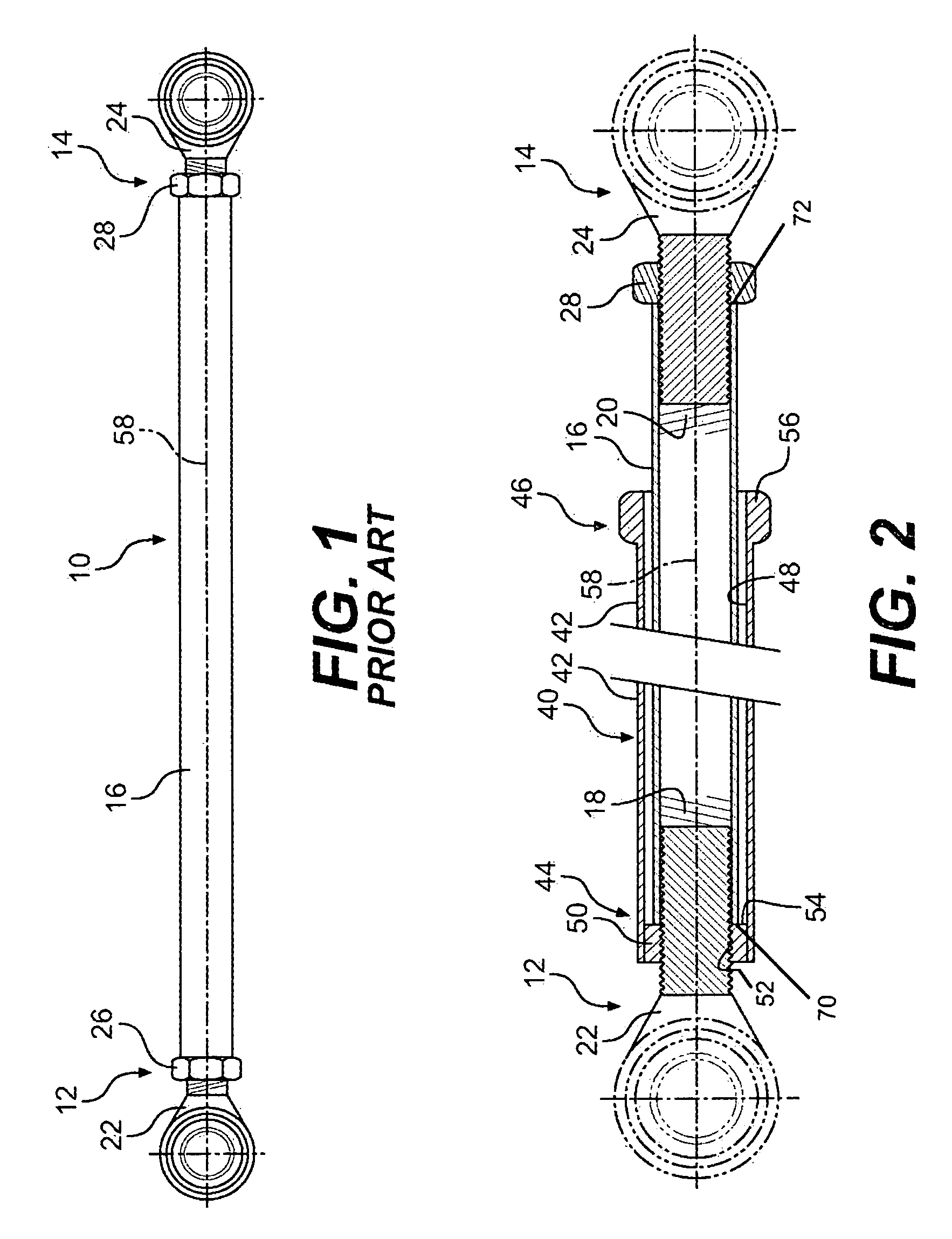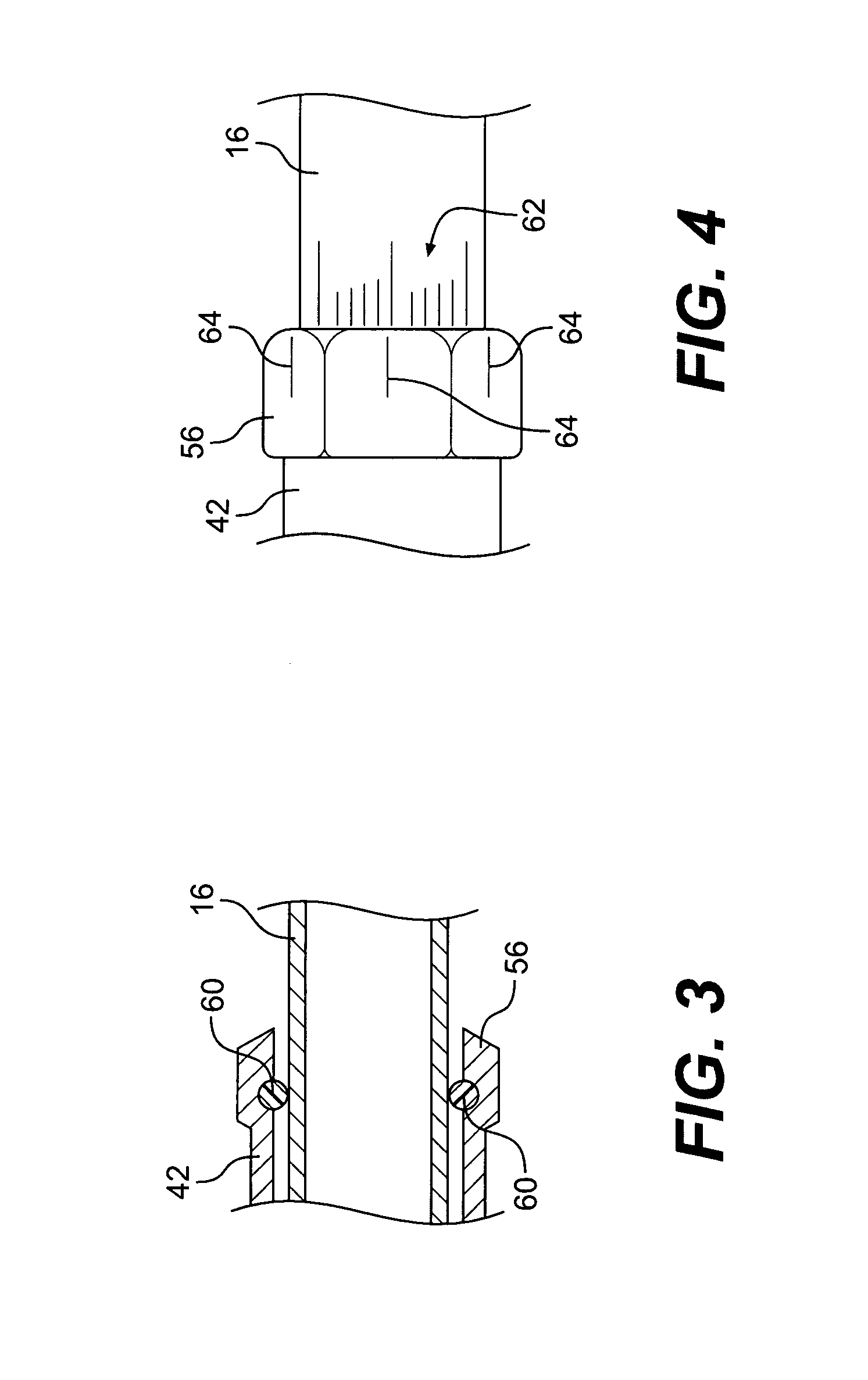Tie rod jam nut
a technology of tie rods and nuts, which is applied in the direction of rod connections, mechanical control devices, process and machine control, etc., can solve the problems of time-consuming and prevent the rapid adjustment of the toe-in, and achieve the effect of quick and easy toe-in setting and simplified access to both
- Summary
- Abstract
- Description
- Claims
- Application Information
AI Technical Summary
Benefits of technology
Problems solved by technology
Method used
Image
Examples
Embodiment Construction
[0016]A tie rod jam nut 40 according to the present invention is shown in partial sectional view in FIG. 2. It replaces the jam nut 26 shown in FIG. 1 and includes an elongated tubular body 42 having a first end 44 and a second end 46. The tubular body has an axially extending internal bore 48 that receives a portion of the tie rod 16. Tie rod 16 includes an inboard axially facing jam nut engaging portion 70 and an outboard axially facing jam nut engaging portion 72. The tie rod jam nut 40 includes a locking portion 50 connected to the first end of the tubular body 42. The locking portion has a threaded bore 52 for engaging the threaded portion of connecting component 22 and a face portion 54 for engaging the inboard axially facing jam nut engaging portion 70 of the tie rod 16, when the connecting component 22 is screwed into the threaded bore 18 of the tie rod 16. The face portion 54 of the locking portion 50 can thus engage the inboard axially facing jam nut engaging portion 70 of...
PUM
| Property | Measurement | Unit |
|---|---|---|
| axial forces | aaaaa | aaaaa |
| length | aaaaa | aaaaa |
| time | aaaaa | aaaaa |
Abstract
Description
Claims
Application Information
 Login to View More
Login to View More - R&D
- Intellectual Property
- Life Sciences
- Materials
- Tech Scout
- Unparalleled Data Quality
- Higher Quality Content
- 60% Fewer Hallucinations
Browse by: Latest US Patents, China's latest patents, Technical Efficacy Thesaurus, Application Domain, Technology Topic, Popular Technical Reports.
© 2025 PatSnap. All rights reserved.Legal|Privacy policy|Modern Slavery Act Transparency Statement|Sitemap|About US| Contact US: help@patsnap.com



